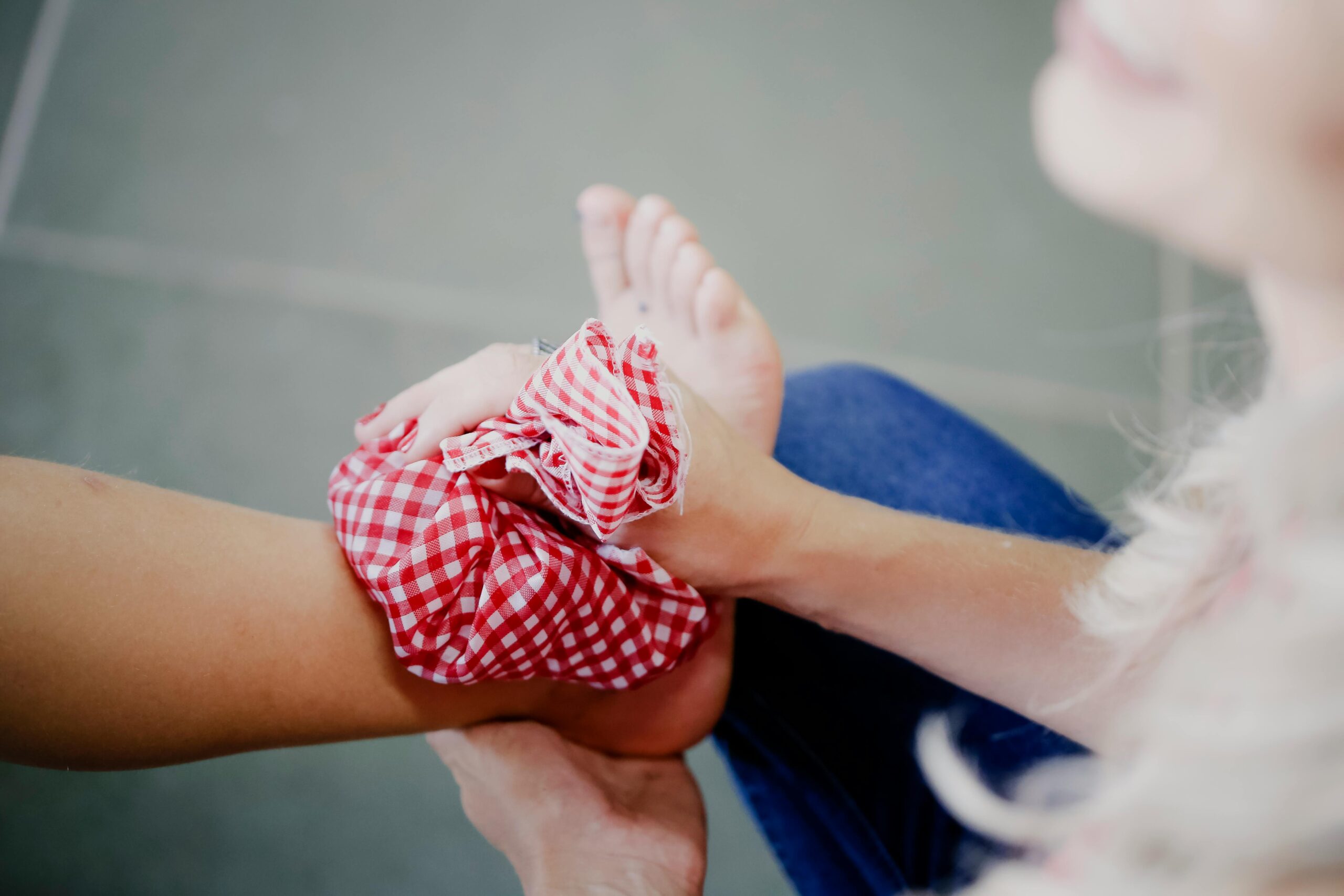
Key Takeaways
-
Diabetic skin inflammation can be managed through specific hydrotherapy interventions.
-
Understanding how diabetes affects the skin is crucial for effective treatment and prevention.
-
Hydrotherapy includes a range of water-based treatments that can improve circulation and reduce inflammation.
-
Warm water soaks and cold compresses are among the hydrotherapy techniques beneficial for diabetic skin.
-
Consulting healthcare professionals before starting hydrotherapy is essential for safety and effectiveness.
What Is Diabetic Skin Inflammation?

When you have diabetes, your skin can tell a story about your health. It’s one of the first places where signs of high blood sugar can show up. Inflamed skin in diabetes is not just about dryness or itchiness—it’s a sign that your blood sugar levels could be off. It’s crucial to recognize these symptoms early because managing your skin health is a part of managing diabetes.
Understanding Diabetic Skin Conditions
Let’s dive into what diabetic skin inflammation really is. It’s a broad term that includes various skin conditions like diabetic dermopathy, which shows up as light brown, scaly patches, or necrobiosis lipoidica, which starts as a dull, red raised area. Then there’s diabetic blisters, which can look alarming but are usually painless. These conditions are often a result of high blood sugar levels damaging the small blood vessels and nerves in your skin.
Why Skin Care Matters in Diabetes
Why should you care about your skin if you have diabetes? Because your skin is your first line of defense against infection. When it’s compromised, bacteria can get in and cause all sorts of problems. Plus, diabetes can slow down the healing process, so a small cut or blister can turn into a big issue fast. That’s why it’s super important to keep your skin healthy and inflammation-free.
Exploring Hydrotherapy Basics
Now, let’s talk about hydrotherapy. It’s like giving your skin a spa treatment, but it’s more than just relaxing—it has real health benefits, especially for people with diabetes. Hydrotherapy uses water to treat various conditions, and when it comes to diabetic skin, it can be a game-changer.
What Hydrotherapy Involves
Hydrotherapy can involve anything from a warm bath to a cold compress, or even a whirlpool. The idea is to use water’s natural properties, like temperature and pressure, to stimulate your body’s healing processes. And the best part? It’s a natural approach, which means fewer side effects compared to some medications.
Remember, while hydrotherapy can be done at home, it’s always a good idea to chat with your healthcare provider before starting any new treatment.
The Science Behind Water-based Therapies
There’s some cool science behind why hydrotherapy works. Warm water helps to increase blood flow, which is super helpful for healing those pesky diabetic skin issues. Cold water, on the other hand, can reduce inflammation and swelling—think of it like a natural anti-inflammatory.
Hydrotherapy Techniques for Skin Relief
Hydrotherapy isn’t just one technique—it’s a collection of methods that can soothe your skin and help manage diabetes-related skin conditions. Let’s look at a few:
Warm Water Soaks for Improved Circulation
A warm water soak is one of the simplest forms of hydrotherapy. Here’s how to do it:
-
Fill a basin with warm (not hot) water. Aim for a temperature that’s comfortable to touch.
-
Gently immerse the affected area of your skin for about 15-20 minutes.
-
Pat your skin dry with a clean towel—don’t rub, as this could irritate your skin.
Warm water helps to open up blood vessels, which can improve circulation. This is particularly helpful for those with diabetes, as better blood flow can accelerate healing and reduce the risk of infection.
Cold Compresses to Reduce Swelling

Cold compresses are another hydrotherapy technique that can be particularly beneficial for reducing swelling and inflammation. Here’s how to use them:
-
Wrap ice or a cold pack in a soft towel—never apply ice directly to your skin.
-
Place the compress on the inflamed area for about 10-15 minutes at a time.
-
Give your skin a break for at least 20 minutes before reapplying if needed.
This method is especially useful for swollen feet, a common issue for many with diabetes.
Whirlpool Therapy for Enhanced Skin Health
Whirlpool therapy is a more advanced form of hydrotherapy that can help with diabetic skin conditions. The swirling water not only soothes the skin but also gently exfoliates and promotes healing. However, this should be done under the guidance of a healthcare professional to ensure it’s appropriate for your specific condition.
Benefits of Hydrotherapy for Diabetic Skin
Hydrotherapy offers several benefits for managing diabetic skin inflammation:
Firstly, it can significantly improve circulation, which is often compromised in diabetes. This is important because good blood flow is essential for wound healing and reducing the risk of infection.
Secondly, hydrotherapy helps to reduce stress levels. Stress can negatively impact blood sugar control, so anything that helps to relax the body can also help to manage diabetes more effectively.
Alleviating Inflammation with Hydrotherapy
Reducing inflammation is a key part of treating diabetic skin conditions, and hydrotherapy can play a significant role in this. The use of warm and cold treatments helps to modulate the inflammatory response, providing relief from discomfort and helping to prevent further skin damage.
Hydrotherapy’s Role in Healing Diabetic Ulcers
Diabetic ulcers are a serious concern and can lead to complications if not treated promptly. Hydrotherapy, particularly in the form of warm soaks, can aid in the healing process by increasing blood flow to the affected area, which brings nutrients and oxygen that are vital for tissue repair.
Prevention and Maintenance
Beyond treatment, hydrotherapy can also be a part of your daily routine to help prevent skin issues from arising in the first place. Here are some tips:
-
Regularly inspect your skin for any changes or signs of inflammation.
-
Maintain good blood sugar control to reduce the risk of skin complications.
-
Keep your skin clean and moisturized to protect its natural barrier.
By incorporating these practices, you can help keep your skin healthy and reduce the likelihood of inflammation and ulcers.
Routine Hydrotherapy for Lasting Skin Protection
Consistency is key when it comes to hydrotherapy. Incorporating it into your regular self-care routine can help maintain skin health over the long term. Just remember to always test the water temperature with your hands first, as diabetes can sometimes reduce sensitivity in your feet and legs.
Daily Skin Care Tips for Diabetes
Here are some simple daily skin care tips to follow:
-
Stay hydrated—drinking plenty of water helps keep your skin supple.
-
Use mild, fragrance-free soaps and moisturizers to avoid skin irritation.
-
After bathing, apply lotion while your skin is still damp to lock in moisture.
These steps are easy to follow and can make a big difference in your skin’s health.
Best Practices and Precautions
While hydrotherapy can be highly beneficial, there are times when it may not be suitable. Here’s what you need to know:
Safety First: When to Avoid Hydrotherapy
Hydrotherapy is generally safe, but there are situations where it should be avoided:
-
If you have open wounds or sores, submerging them in water could increase the risk of infection.
-
People with neuropathy should be cautious, as they may not be able to feel the temperature of the water properly.
-
If you have heart conditions, consult your doctor before trying hydrotherapy, as changes in temperature can affect blood pressure.
Always prioritize safety and get the green light from your healthcare provider before starting any new treatment.
Professional Advice: Consulting with a Dermatologist
Dealing with diabetic skin inflammation isn’t something to take lightly. If you’re considering hydrotherapy or any other new treatment, it’s wise to consult a dermatologist first. These skin experts can provide tailored advice based on your unique situation. They’ll help you understand the potential benefits and risks, and they can also spot any underlying issues that might be causing your skin problems. Most importantly, they can guide you on how to safely incorporate hydrotherapy into your care routine.
Supplemental Treatments and Lifestyle Changes
Hydrotherapy can be a valuable part of your skin care regimen, but it’s just one piece of the puzzle. To truly manage diabetic skin inflammation, you’ll need to consider additional treatments and make some lifestyle changes.
Diet and Exercise for Skin and Overall Health
A balanced diet and regular exercise can do wonders for your skin and diabetes management. Foods rich in antioxidants can help fight inflammation, while physical activity increases blood flow, helping to nourish skin cells. Aim to fill your plate with a colorful array of fruits and vegetables, lean proteins, and whole grains. As for exercise, find activities you enjoy, whether that’s walking, swimming, or cycling, and make them part of your daily routine.
Additional Skin Care Treatments to Consider
Besides hydrotherapy, there are other skin care treatments you might want to explore:
-
Topical creams with anti-inflammatory properties can help soothe irritated skin.
-
Light therapy, which involves exposure to specific wavelengths of light, may reduce inflammation and promote healing.
-
Regular visits to a podiatrist can help prevent foot problems, a common complication of diabetes.
Always discuss these options with your healthcare provider to ensure they’re safe and appropriate for you.
FAQs
1. How Often Should Hydrotherapy Be Administered?
The frequency of hydrotherapy depends on your specific condition and needs. For some, a daily warm soak might be beneficial, while others might benefit from less frequent sessions. Your healthcare provider can help you determine the right schedule. Remember, consistency is key, but overdoing it can lead to skin irritation or other issues.
2. Can Hydrotherapy Be Done at Home?
Yes, hydrotherapy can often be done at home. Simple techniques like warm soaks or cold compresses are easy to do with basic household items. However, if you’re considering more advanced treatments like whirlpool therapy, you might need to visit a specialized facility. Always follow the guidance of your healthcare provider to ensure you’re doing it safely and effectively.
3. What Are the Signs of Overdoing Hydrotherapy?
If you notice increased skin dryness, irritation, or any new skin issues, these could be signs that you’re overdoing hydrotherapy. Listen to your body and adjust your treatments accordingly. If you’re ever in doubt, stop the treatment and consult your healthcare provider.
4. Do I Need Special Equipment for Hydrotherapy?
For basic hydrotherapy techniques like warm soaks or cold compresses, you don’t need any special equipment—just a basin, clean water, and a towel. For more advanced treatments, such as whirlpool therapy, specialized equipment is necessary, and these are typically found in medical facilities or rehabilitation centers.
5. Are There Any Age Restrictions for Hydrotherapy?
Hydrotherapy can be beneficial for people of all ages, but certain precautions should be taken for the elderly or very young. Always consult with a healthcare provider before starting hydrotherapy, especially for individuals with compromised skin integrity or those who have difficulty sensing temperature changes due to age or neuropathy.
By incorporating hydrotherapy into your diabetes management plan, along with a healthy diet, regular exercise, and appropriate skincare treatments, you can take significant steps toward improving your skin health. Remember, the key to successful management is a comprehensive approach that addresses not just the symptoms but also the underlying causes of your skin inflammation. Stay proactive, stay informed, and don’t hesitate to seek professional advice to ensure you’re on the right track to healthy skin and better diabetes control.


